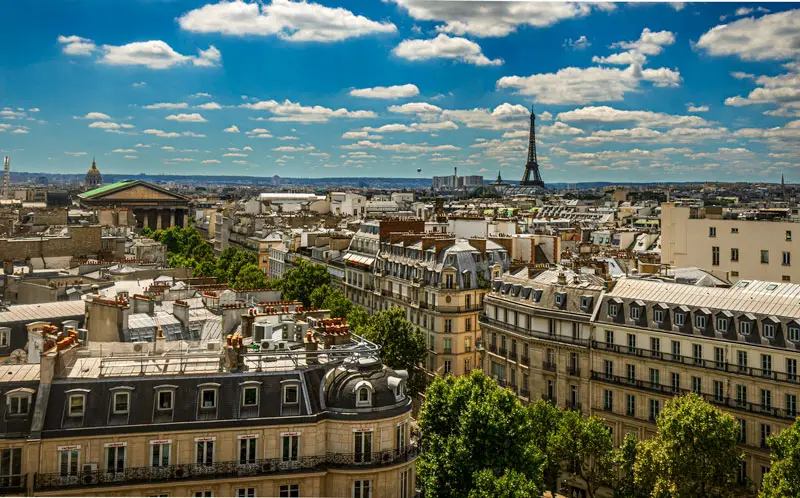Navigating the Paris Metro can be daunting, but with this guide, you’ll be moving like a local in no time. Whether you’re facing the ticket machine or deciphering the metro map, follow these steps to ensure a smooth journey. This guide, crafted by a French native, will make your Paris weekend unforgettable.
To maximize your Paris experience, don’t miss our comprehensive guide on what to do and where to stay.
History of the Paris Metro
Spanning 205 km with 303 stations and transporting over 1.5 billion passengers annually, the Paris Metro is one of the world’s most efficient underground systems. Its current form is the result of a rich history, largely credited to one man: Fulgence Bienvenüe.
During the industrial revolution, the Second Empire sought to modernize Paris with railroads. The “line of the small belt,” a dual track encircling Paris, was built in 1852 but failed to address inner-city transport needs.
In 1863, London inaugurated the world’s first underground railway, followed by New York in 1868, Chicago in 1892, and Budapest in 1896. After years of debate between the central government and the City of Paris, a decision was made in 1895 to construct an urban transport system in Paris. The goals were twofold: to open in time for the 1900 World Fair and to complete six lines by 1911.

Paris Metro map in 1900
This monumental task was assigned to Breton engineer Fulgence Bienvenüe, born in 1852. Despite losing his left arm in a work accident in 1881, Bienvenüe rose to become Chief of Technical Service of the Metropolitan in 1898.
The construction of the Paris Metro was a significant 20th-century achievement, aligning Paris with London and New York. However, the extensive works caused major disruptions, and many Parisians were initially opposed to the development.
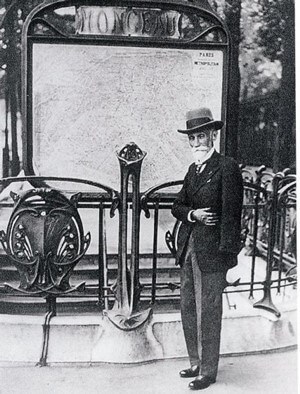
Although nearly complete, the Metro was not ready for the World Fair’s opening on 14 April 1900. Shortly after, on 19 July 1900, Line 1, connecting Porte Maillot and Porte de Vincennes, became operational. This marked the beginning of a successful venture, with 4 million passengers using the Metro within the first five months. Subsequent lines 2, 3, 4, and 5 were completed by 1910, a year ahead of schedule.
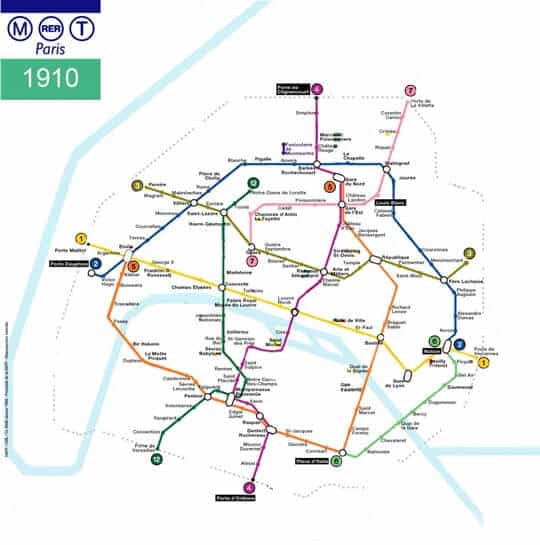
Fulgence Bienvenüe oversaw the Metro’s construction until 1932, except for Lines 11 and 14. He is buried at Père-Lachaise Cemetery.
How Paris Metro Works ?
Today, the Paris Metro boasts 16 lines, making it easy to visit all the city’s iconic attractions. For instance, Line 1 takes you to Le Marais, Châtelet-les-Halles, the Louvre, the Champs-Élysées, and the Arc de Triomphe. To reach the Eiffel Tower, use Line 6. For Notre-Dame de Paris and Saint-Germain-des-Prés, hop on Line 4. Refer to the metro map for more details.
The Metro operates from 05:30 to 01:15. During the closed hours (01:15 to 05:30), you can use the Noctilien night bus service.
The Paris Metro is divided into zones: Zones 1 to 3 cover central Paris, while Zones 4 and 5 include the airports.
While the entrances may vary in style, they all lead underground.
For essential safety tips on using the Paris Metro, be sure to read our comprehensive guide.
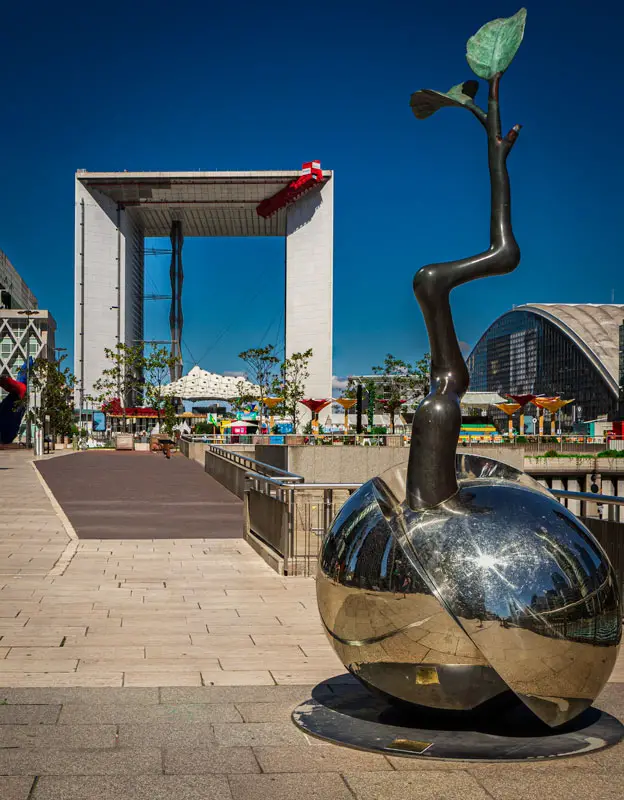
How to buy a ticket in Paris Metro?
Navigating the Paris Metro ticketing system is straightforward once you know your options. Here’s a quick guide:
- Single Ticket: Valid for one-way travel and allows you to stay inside the Metro for up to 2 hours.
- Carnet: A book of 10 single tickets, offering a cost-effective option for multiple journeys.
- Ticket Mobilis: Ideal for more than 4 journeys in a day, this ticket is valid for one day. Prices vary by zone, but for central Paris (Zones 1-3), it costs around €8.
- Forfait Paris Visite: Offers unlimited travel and discounts on attractions like 20% off at the Arc de Triomphe and other museums.
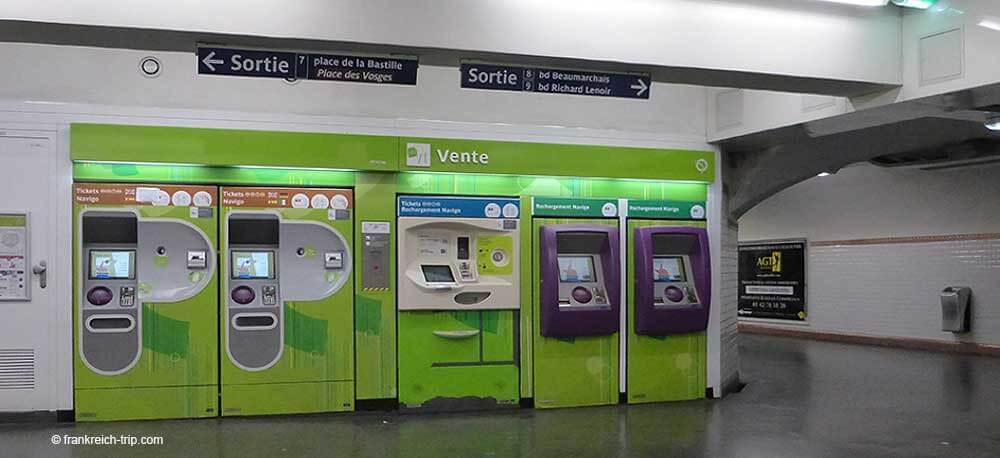
Ticket machines accept various payment methods: some take banknotes and coins, most accept coins, and all accept chip-and-pin cards. Children under 4 travel free.
How to Use your Ticket
- Choose Your Destination: Be mindful of the numerous lines and their directions. Instead of “west” or “east,” lines are identified by their endpoints (e.g., “Étoile” or “Nation”).
- Insert Your Ticket: At the gate, insert your ticket to access the platform. Double-check the endpoint to ensure you’re heading in the right direction.
- Travel Time: Your ticket remains valid for 2 hours, allowing you to change platforms if needed without using another ticket.
How to use Paris Metro Map
Station Maps: Always locate a map at the station to identify the different exits. Spend a few minutes to pinpoint your exact destination and choose the correct exit.
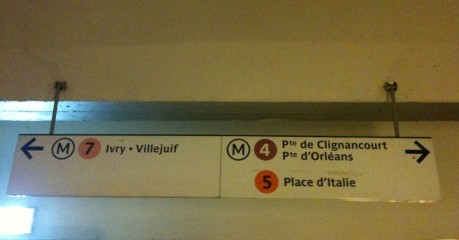
Changing Lines: Follow signs with the colour and number of the next line.
Accessibility: Note that only Line 14 is currently accessible for wheelchair users.
Difference Between Metro and RER
In addition to the Metro, Paris also has the RER, a double-decker train system that travels both within and outside the city. While the RER can be used inside Paris, it doesn’t stop at every Metro station, so check the map for specific stops.
Interesting Metro Stations
Paris Metro stations are not just transit points; some are attractions in their own right:
Louvre-Rivoli
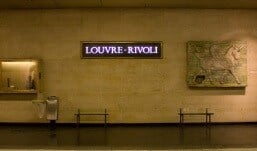
Built in 1990 alongside the Louvre’s glass pyramid, this station features reproductions of fine art, reflecting the museum’s prestigious collection. Although it doesn’t provide direct access to the Louvre, it’s a visual treat for passengers.
Palais Royal-Musée du Louvre: The main Metro station for the Louvre Museum, another must-see.
Place Colette: Known for its entrance adorned with multi-coloured glass baubles, it’s definitely worth a visit.
Concorde
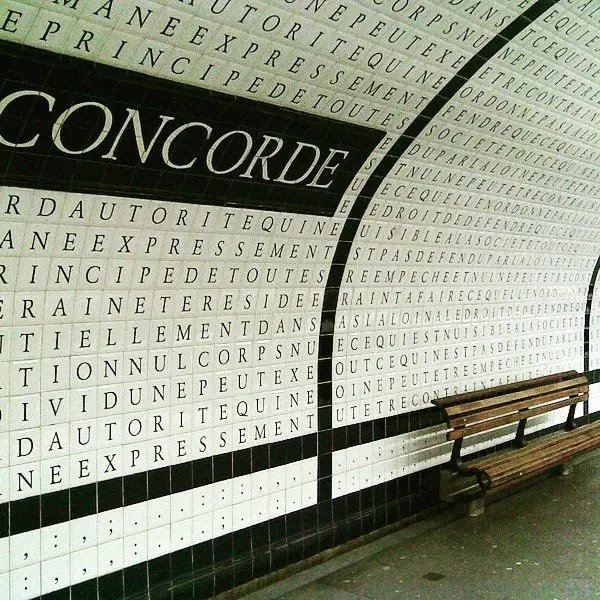
Concorde is one of the largest intersections in the Paris Metro, connecting Lines 1, 8, and 12. It’s the main station for those heading to the Orangerie Museum or taking a stroll up the Champs-Élysées. Opened in 1990, it stands out for its unique design, particularly the walls of Line 12, which are adorned with lettered tiles.
These tiles spell out the 1789 Déclaration des Droits de l’Homme et du Citoyen, designed by artist Françoise Schein. While waiting for your train, see how many words you can spot! Additionally, Ezra Pound’s 1912 poem “In a Station of the Metro” was inspired by this very station.
Abbesses
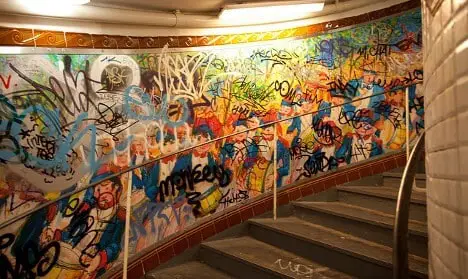
The entrance to Abbesses Metro station features one of only two original Art Nouveau glass canopies (or édicules) remaining in Paris, designed by Hector Guimard. Originally covering the Metro at Hôtel de Ville, it was moved in the 1970s to Montmartre, home to the Sacré-Cœur. Film enthusiasts might recognize this station from the popular film “Amélie.” Abbesses is the deepest Metro station in Paris at 36 meters. As you descend, you’ll encounter vivid murals and graffiti-covered walls.
Pont Neuf
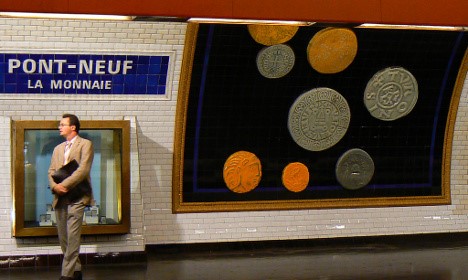
Pont Neuf, despite its name suggesting it’s new, is the oldest bridge in Paris, built in 1607. It’s a popular spot for romantic walks over the River Seine towards Île de la Cité to visit Notre-Dame and Sainte-Chapelle. The Pont Neuf Metro station is themed around the Monnaie de Paris (Paris Mint), located nearby. The walls feature large models of French coins, display cabinets, and weighing scales for money.
Bastille
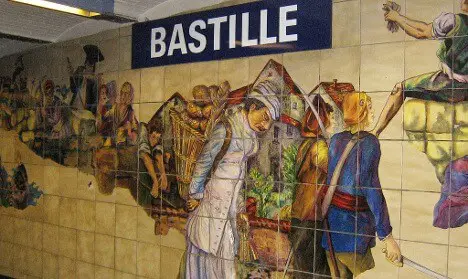
Immerse yourself in French history at Bastille station. Decorated in 1989 by Liliane Belembert and Odile Jacquot to celebrate the bicentenary of the French Revolution, the station’s platform features five frescoes depicting historic scenes.
Arts et Metiers
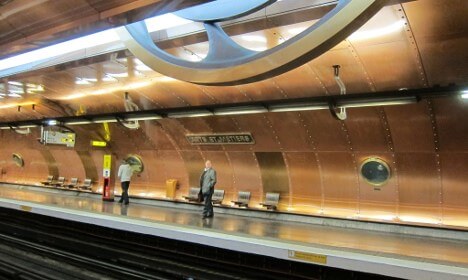
Arts et Métiers station is entirely unique, with its vaulted ceiling and copper cladding, designed to evoke the feeling of being inside a submarine. The station features portholes and exposed rivets, reflecting the nearby Arts et Métiers Museum, which showcases technological evolution, including old cars, planes, and Foucault’s pendulum. The station’s redesign was inspired by the writings of Jules Verne, providing an apt entrance to the world of innovation.
For useful travel accessories to keep you secure and safe while using the Paris Metro, check out the products we recommend.
How to Get to the Airport ?
Charles de Gaulle Airport (CGD)
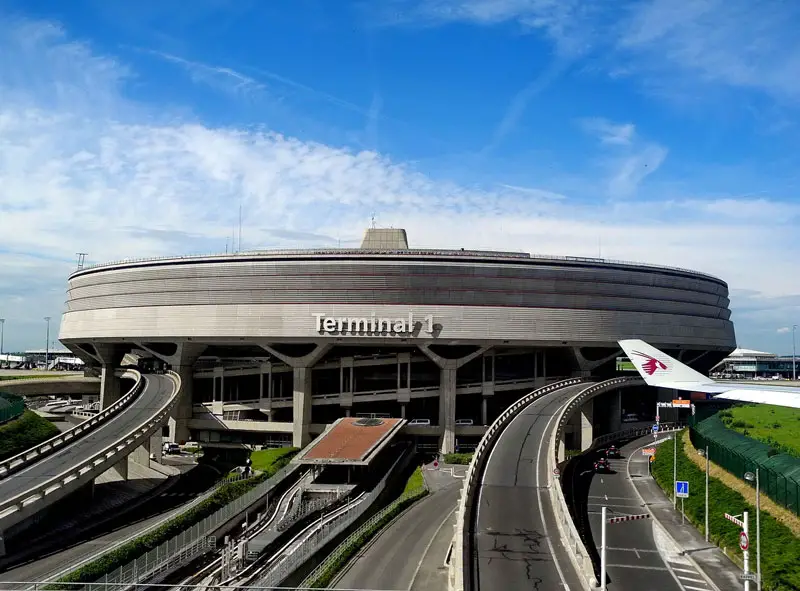
Located 25 km northeast of Paris and also known as Roissy Airport, Charles de Gaulle Airport is the largest in France and the seventh-busiest in the world, serving over 65 million passengers annually.
One of the quickest and most affordable ways to travel to central Paris is via the RER B (blue) train line, which stops at both Terminal 2 and Terminal 3. Terminal 2 has seven sub-terminals, all accessible by foot or via the free N1, N2, and N3 shuttle buses. If you arrive at Terminal 1, take the free shuttle train to Terminal 3, the easiest station to catch the RER B from.
Train tickets can be purchased from the blue ticket machines (not the yellow ones, which sell TGV tickets) or from a train station employee in a booth. Tickets cost €9.25 one-way, and the journey takes up to 50 minutes.
Ensure you take the RER B line heading towards Robinson, Antony, or St-Rémy-lès-Chevreuse, and the train will stop at central Paris stations such as Gare du Nord. Trains run from Charles de Gaulle Airport to Paris between 04:46 and 23:56, Monday to Sunday.
Orly Airport
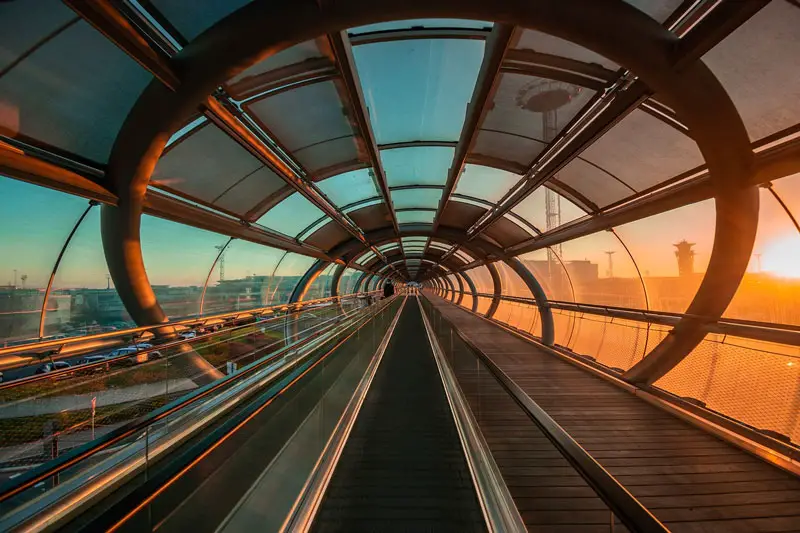
RER Line B
Orly Airport is connected to the RER B train line at Antony train station via the OrlyVal shuttle train. The RER B line also interconnects with the Paris Métro. Tickets for the Métro (and local RATP buses) can be purchased individually or in packs of ten (un carnet), which is more economical. If you’re staying in Paris for more than a day, consider getting a Paris Visite card. This card offers unlimited travel on most modes of transport and discounts at museums and other attractions.
OrlyVal
OrlyVal is an automatic light Metro with only three stops: Antony Train Station and two stops at Orly Airport. It is the fastest way to connect from Orly Airport to public transport, such as the RER B line.
- Stops at Orly airport
- Paris – Orly airport South (terminal S): entrance K.
- Paris – Orly airport West (terminal W): entrance A Arrival Level
- OrlyVal is free to use between both terminals (West and South).
- Travel Time: 25-35 minutes. The trains operate every four to seven minutes.
- Opening hours: Daily, from 06:00 am to 11:35 pm.
RER Line C
- A shuttle “Go C Paris” connects Orly Airport to the RER C train at Pont de Rungis- Aeroport d’Orly
- Stops at Orly airport:
- Paris – Orly South: Gate C, Stop 5.
- Paris – Orly West: Gate C, Stop 7
- Travel Time: 35 minutes, with a frequency of 15 minutes.
How to go to Disneyland Paris ?
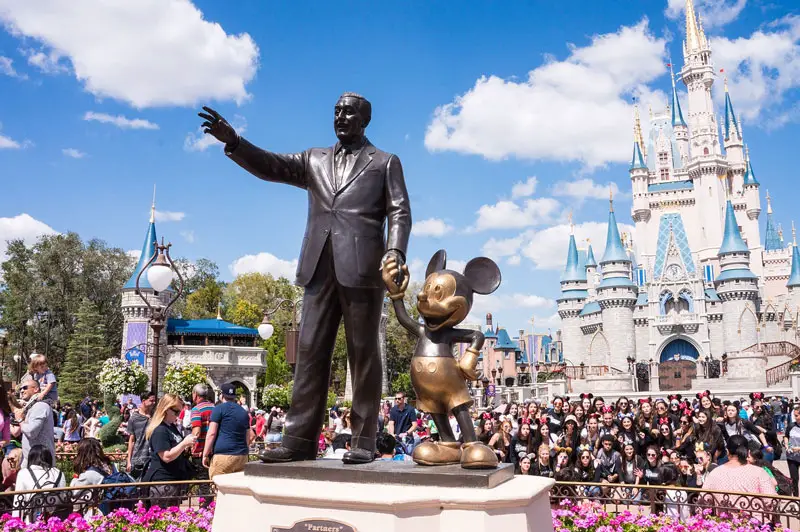
Disneyland Paris, also known as Euro Disney, is about 20 miles (32 km) east of central Paris. The most popular way to travel between Euro Disney and the city centre is on the suburban commuter trains called the RER (Regional Express Network).
RER Line A terminates at Marne-la-Vallée station, which is next to the front gates of Disney Village and the theme parks at Disneyland Paris. The journey takes about 40 minutes.

